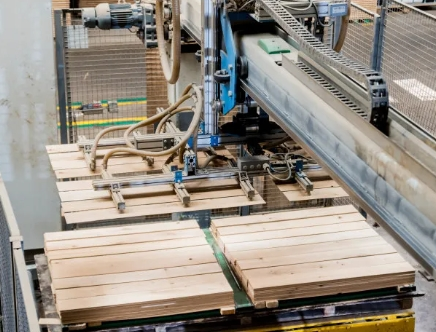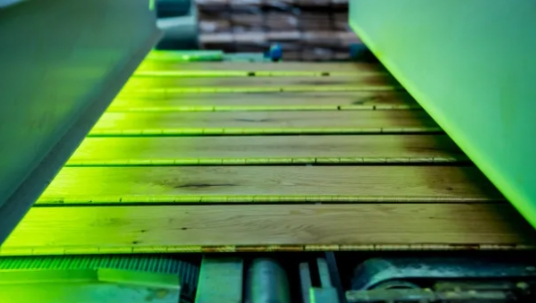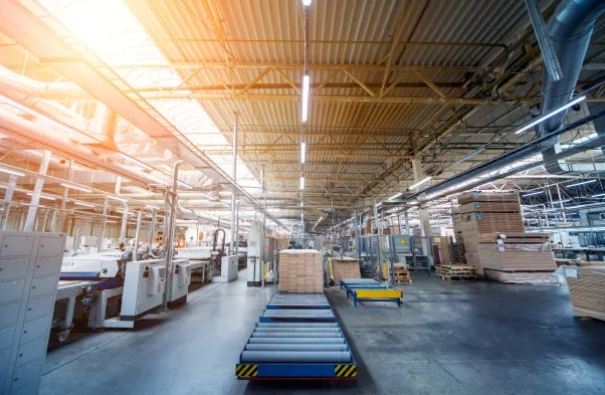The Role of Automation in Sports Wooden Flooring Production: Enhancing Quality and Efficiency
In the rapidly evolving world of manufacturing, automation is playing an increasingly important role in improving both the quality and efficiency of sports wooden flooring production. With the growing demand for high-performance, durable, and sustainable flooring options, integrating advanced automation technologies in the production process has become essential.
1. Automation in Raw Material Selection and Processing
The first step in manufacturing sports wooden flooring is sourcing and preparing the raw materials. Automation has significantly enhanced this stage by introducing precision cutting and sorting technologies, ensuring that only the highest-quality wood is used in the production process.

Key Technologies:
- Automated Sorting Systems: These systems can detect and categorize wood based on its grade, color, and other characteristics, allowing manufacturers to select the most suitable wood for each floorboard. This helps eliminate defects and inconsistencies that could compromise the final product's quality.
- Laser Scanning and Quality Inspection: Automated laser scanners can be used to detect flaws like knots or cracks in the wood before it is cut or processed. This reduces the likelihood of defects in the finished floor and ensures consistency across large production batches.
By integrating automated systems into raw material handling, manufacturers can reduce material waste, improve the quality of the wood used, and speed up the initial stages of production.
2. Precision Cutting and Shaping
Once the raw materials are prepared, the next critical step is cutting the wood into the desired shapes and sizes for sports floors. Automation has allowed for much greater precision and consistency in this process, reducing human error and ensuring that each piece fits perfectly within the flooring system.
Key Technologies:
- CNC Machines (Computer Numerical Control): CNC machines are programmed to cut wood with incredible precision. These machines can follow complex designs and measurements, reducing waste and the need for manual adjustments. With CNC technology, manufacturers can produce floorboards that fit together seamlessly and with minimal variation.
- Robotic Arm Systems: Robotic arms are used to move large and heavy pieces of wood with accuracy, increasing the speed of production while reducing the risk of injury or damage to materials.
With these advanced technologies, the cutting and shaping process becomes faster and more accurate, resulting in higher-quality floorboards that meet strict industry standards.
3. Surface Finishing: Automation for Consistency and Durability
The surface of sports wooden flooring is one of the most crucial aspects of its performance. The application of finishes and coatings to protect the wood from wear and environmental factors is now automated to ensure even coverage and optimal durability.

Key Technologies:
- Automated Coating Machines: These machines ensure that the correct amount of finish is applied to each board. With adjustable settings, manufacturers can apply multiple layers of coating with precision, ensuring uniform coverage and a durable surface that resists scratches, moisture, and heavy traffic.
- UV Curing Systems: Automated UV curing systems are used to rapidly dry and harden the applied coatings. This process enhances the durability of the finish and reduces production time, allowing for a faster turnaround on flooring projects.
Automation in surface finishing not only improves the overall quality of the floor’s finish but also speeds up the drying and curing process, allowing manufacturers to complete production cycles faster and more efficiently.
4. Assembly and Packaging Automation
Once the floorboards are cut, shaped, and finished, the next step is assembly and packaging. Automation plays a significant role in this final stage by streamlining the entire process.
Key Technologies:
- Automated Assembly Lines: These systems help align and assemble individual boards into complete flooring sections. The precise placement of boards ensures that each flooring system is uniform, reducing the likelihood of gaps or alignment issues.
- Robotic Packaging: Robots are used for packaging the finished flooring materials, making sure they are securely and efficiently packed for transport. This eliminates the risk of human error during packing, reduces handling time, and ensures that the products arrive at their destination in perfect condition.
5. Reducing Production Costs and Improving Sustainability
Beyond quality and efficiency, automation also offers significant cost-saving opportunities. By reducing the need for manual labor and optimizing production processes, manufacturers can lower operational costs. Furthermore, automation can help reduce material waste, improve energy efficiency, and contribute to more sustainable manufacturing practices.

Key Benefits:
- Reduced Labor Costs: With machines taking over repetitive tasks, manufacturers can allocate human workers to more complex tasks, reducing labor costs while improving productivity.
- Sustainability: Automated systems help optimize the use of raw materials, ensuring that wood is used efficiently and reducing waste. Additionally, automated processes can be fine-tuned for energy efficiency, contributing to more sustainable operations.
The integration of automation into sports wooden flooring production has transformed the industry, allowing manufacturers to achieve higher levels of precision, consistency, and efficiency. From raw material processing to assembly and packaging, automation improves every stage of the production process. As automation technologies continue to evolve, the future of sports wooden flooring looks even more promising, with improved quality, reduced costs, and a greater emphasis on sustainability.
By embracing these advanced technologies, manufacturers can meet the increasing demand for high-quality, durable, and eco-friendly sports flooring while staying competitive in a rapidly changing market.